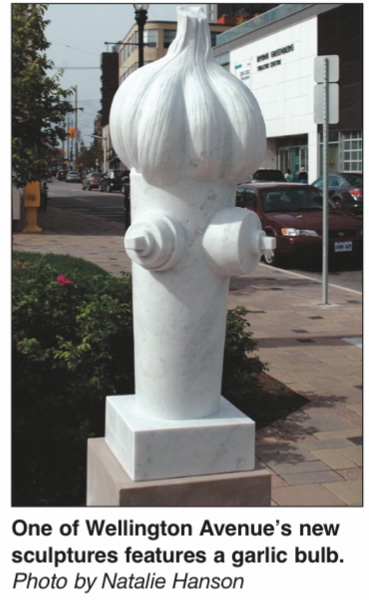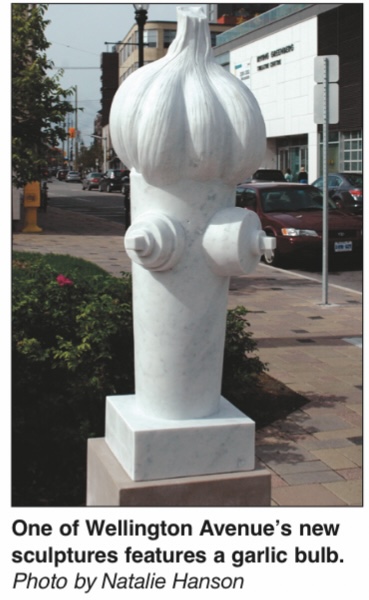By John Sobel
Nothing prepares you for public art.
From the awe-inspiring sight of a monumental sculpture like Maman, the giant spider in front of the National Gallery, to the serendipitous charm of the tiny homemade Swap Boxes nailed to neigh-bourhood telephone poles, public art always catches you by surprise.
We simply never expect to find our environment altered in the many ingenious ways that artists do alter it when given the chance.
The residents of and visitors to Wellington West during the past week have been surprised by the installation of no less than 18 marble sculptures along Wellington Street West, between Somerset Square in Hintonburg and Gilchrist Avenue in Wellington Village. For days now people have been stopping and staring, and turning to their friends, or even to complete strangers standing next to them, and asking: “How did these get here? What are they? What do you think of them?”
The answer to the first of these questions is easy.
The impetus for their creation comes from the City of Ottawa’s Percent for Art Program, which assigns 1% of the capital budget for any new infrastructure to public art. (In this case the funds came from the Wellington West road reconstruction.) Of course another answer would be that the marble for the sculptures — all 20 tons of it — came from Italy.
The famous mine at Carrera to be exact. One could also say they came from Carp, where artists Marcus Kucey-Jones and Ryan Lotecki worked for over two years in their studio to complete the impressive collection.

The second question is a good one too. “What are they?”
Well, to some extent the answer is obvious: they are marble statues of fire hydrants onto which are grafted a wide range of objects, from asparagus to gourds, from paintbrushes to keyboards; mostly images of food and creativity, which is what the neighbourhood is especially known for. Still, a surprised pedestrian might ask: why do the fire hydrants have things coming out of them?
And why are they hydrants in the first place?
On a walking tour conducted as part of the launch event staged by the Wellington West BIA, Kucey-Jones explained that he and Lotecki wanted their work to reference everyday street elements, as well as both local culture and classical sculpture, and so they came up with the idea of the marble hydrants.
Still, the last question, is really the most important. “What do you think of them?”
Keep in mind that the purpose of public art is not just decorative. It is not just about making the street more attractive and interesting, though certainly these new sculptures do that. Ultimately public art is about inspiring people to consider new possibilities and to reconsider old relationships. Public art is installed not as a monologue but as an invitation to dialogue; an accessible, engaging conversation about urban life as we know it. A conversation that we can all take part in.
So what do you think?
(The following appeared in Newswest)
